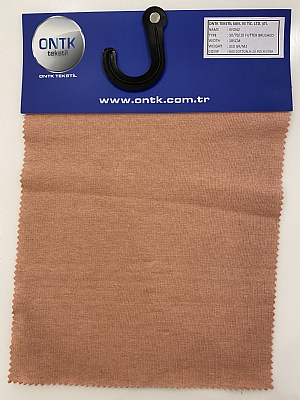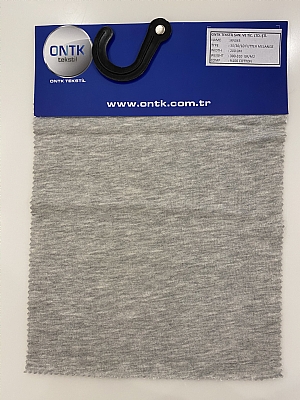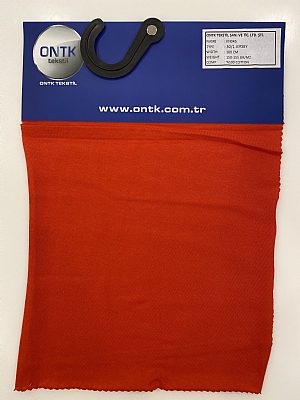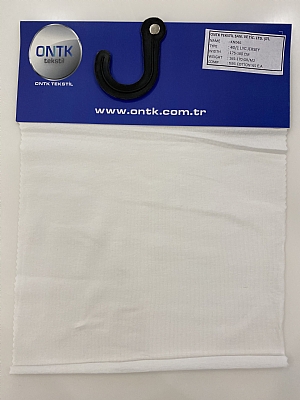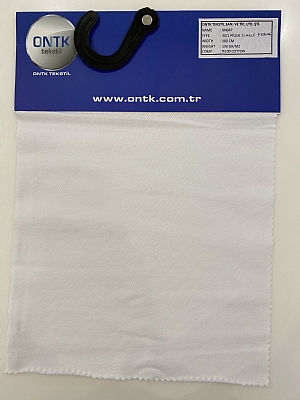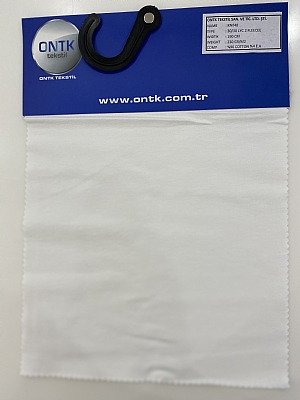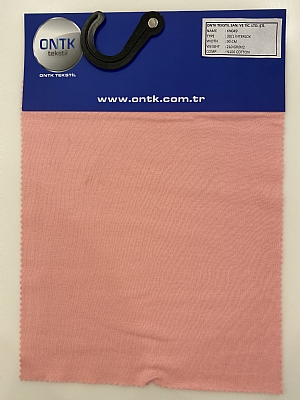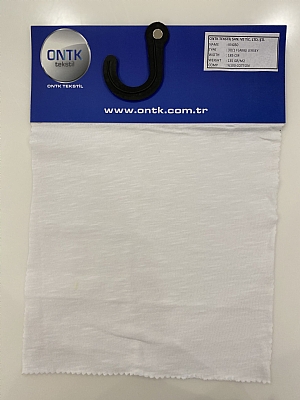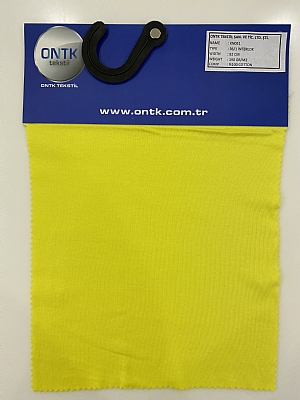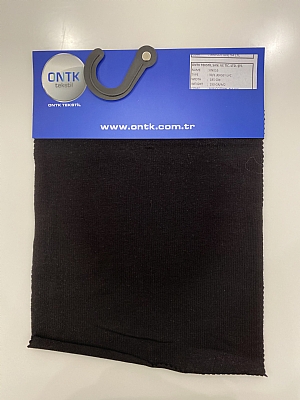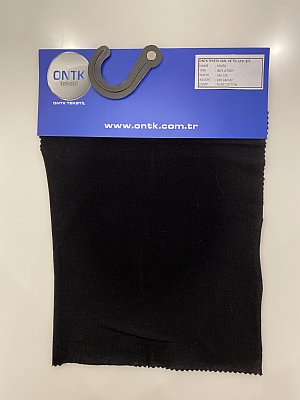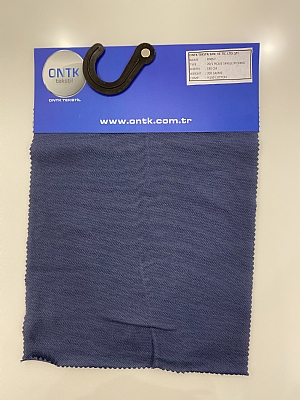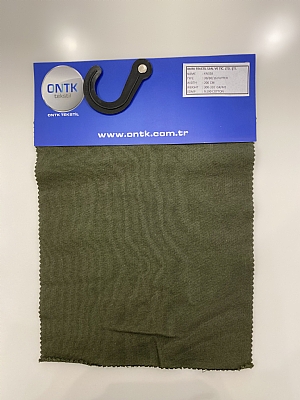1.JERSEY FABRIC
Since single jersey fabric is knitted with a single plate knitting, the back side of the fabric has a different texture. It is generally used in t-shirt production.
According to this ratio, a ranking was made as follows:
• Front and back sides have a different appearance,
• These are fabrics produced in tube form but cut openly,
• It is wider in width compared to rib and interlock fabric types,
• They show both transverse and longitudinal stretching,
• It has less elasticity than rib, interlock and harasho fabrics,
• Their dimensional stability is higher than other weft oriented knitted fabrics,
• In case of too much stretching, their shape may be distorted, so they are less able to hug the body,
• Even though the threads used are the same, the wide appearance is higher in single jersey fabrics,
• They tend to be less patterned,
• It is the type of fabric with the least amount of spent thread,
• When they are cut, curls occur on the edges, this amount varies depending on the yarn density used,
• They are produced with RL flat knitting techniques,
• They are easier to iron as they have less tendency to wrinkle,
• If they are not sewn with very fine needles, they may tear.
2. PIQUE (LACOSTE) FABRIC
Thanks to its fabric texture, it provides comfortable wear and air permeability. It is the type of fabric that players generally prefer during tennis matches. It is the most preferred fabric in polo t-shirts.
Flexibility can be added to the fabric with elastane threads tied to the machine during knitting.
3.INTERLOCK
They are double-layered fabrics knitted on double-plate circular knitting machines. The front and back of the fabric have the same texture. The fabric always maintains its form. interlock fabric fabric has flexibility in horizontal direction. Its weight is heavy, so it is preferred for winter products.
4. PUNTO DI ROMA
Punto di roma interlock fabric, knitted using loops and jumps, is a type of fabric with low flexibility.
• It has the same appearance on the front and back
• Pattern and surface are limited
• They retain good moisture
• Loops may escape when stretched.
• It generally has the same features as interlock
There are many different types of steel interlock. These types are pes interlock, cotton pes interlock, yarn dyed interlock, grizzled striped interlock, ringel interlock.
The areas of use of interlock fabrics are generally baby clothing products and sportswear. It is used in many different areas such as pijama sets, jackets, robes, sportswear, children`s clothing, and swimwear.
The most frequently used areas are baby clothing products. It is a type of fabric that is frequently preferred in baby hats, clothes and tracksuits. It absorbs excess moisture and comes into contact with the air. Therefore, it has the ability to preserve heat very well. This feature is why it is frequently preferred for sportswear and baby clothing products.
Interlock fabrics, which are allergenic and non-fading fabrics, are among the first choice fabrics for many ready-made clothing products today.
5. THESSALONIKI
It is a type of fabric that resembles the Selanik knitting used in sweaters. There are thin and thick varieties. These varieties are one of the fabrics knitted on double plate knitting machines. It is among the double-layer knitted fabrics.
6.CAMISOLE
Camisole, a type of rib, has the feature of transverse elongation. Camisole fabric is used in the belts of some dresses because they have elongation properties.
In recent years, camisole fabric types have begun to be used in microfiber products. They are commonly used on sweaters, belts and underwear.
Camisole fabrics are preferred for many different clothing items. It is a type of fabric that is frequently preferred, especially in women`s clothing products. Since it is economical, it is used in many different ready-made clothing products.
Features of Camisole Fabric
We can summarize the general features of camisole fabric as follows:
• It has the feature of stretching transversely and longitudinally
• These are fabric types with a striped appearance on the front and back.
• Produced similar to rib knit structure
• Its lines are distinct and it is preferred in many underwear products.
• Easy to put on and take off, whether Lycra is used or not
• It is a healthy fabric type as long as artificial materials are not added
• There are glossy and matte varieties
• Dirt retention properties are low,
• Its shape does not deteriorate easily,
• Pattern and printing are easy to do.
7.RIBS
These double-layered knitted fabrics have extremely high flexibility in the transverse direction.
Rib fabric is used in collars, belts and cuffs in knitted ready-to-wear products, thanks to its width and length flexibility.
8.WAFFLE FABRIC
Waffle fabric, named after its small squares and appearance similar to waffle bread, is seen in many areas today. Waffle fabrics, with their high moisture retention feature, are used in towels, bathrobes or quilts preferred in the summer months. It stands out among other fabric types with its unique texture, durability and quality. Unlike its self-embossed and delicate structure, it is easy to clean and offers long-lasting use.
9.TWO THREAD KNITTED FABRIC
These fabrics, which are used with or without raising, are used in the production of clothes such as sweaters, hooded cardigans, and tracksuits.
• The front and back sides are different from each other,
• They are thick fabrics and are used in the spring season,
• They are not preferred as summer fabrics,
• When knitted with Lycra, its flexibility is quite good.
10. THREE-THREAD KNITTED FABRIC
Unlike two-thread knitted fabrics, it is produced using the binding technique by adding a third yarn to the ground and lining yarn. It keeps the heat inside thanks to its fabric structure. Three-yarn knitted fabrics are most commonly used in sweat-shirt production.
• Three-thread fabrics can be produced using melange, vanized, lurex, nope, flam and different fiber mixtures,
• 30-30-10 or 30-20-10 thread types are used,
11.OTTOMAN FABRIC
Ottoman fabric is a type of circular knitted fabric that is today generally produced on rib machines from 100% cotton or 65% cotton and 35% polyester blended yarns. In the production of the fabric, two systems are set as interlock and half system is set as single jersey on the rib machine. In this way, a fluffy structure in the form of lines appears on the ottoman fabric, while a flat surface prevails on the reverse side of the fabric. It is a type of fabric with a ribbed appearance that is thick and has low elasticity.
